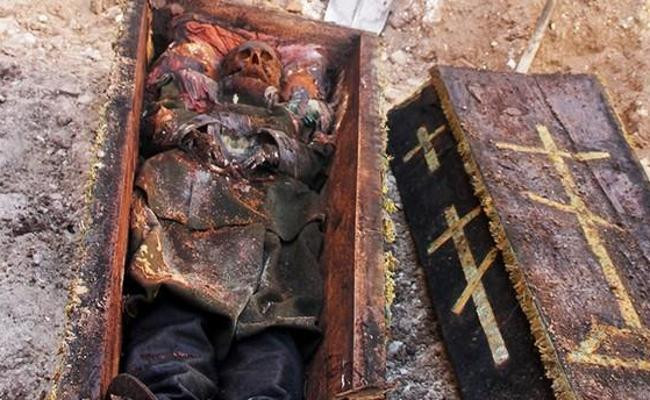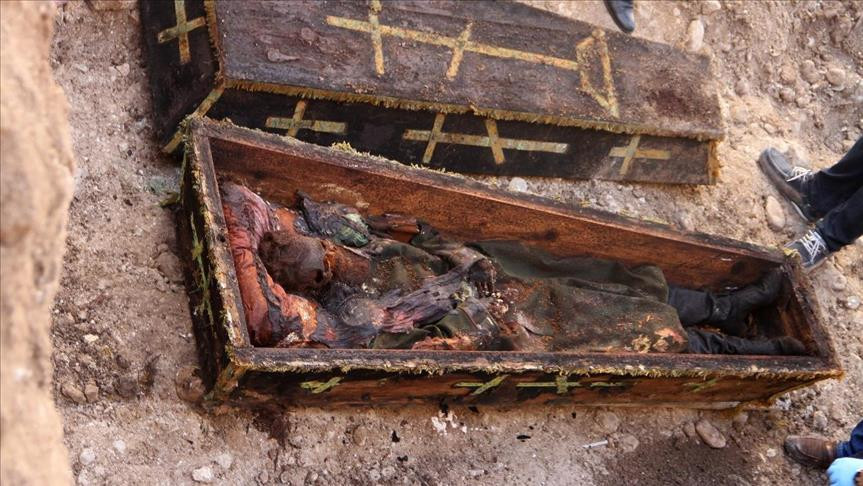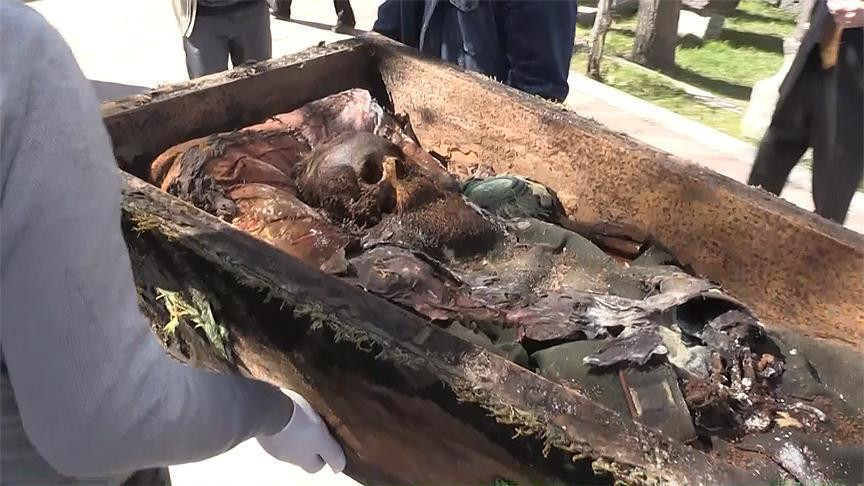In the peaceful town of Ardahan, Turkey, a fascinating chapter of history has emerged from the soil—the skeletal remains of a 19th-century Russian soldier. This extraordinary find, marked by the soldier’s Russian Orthodox cross and remnants of his military attire, is believed to be the grave of an army captain who served during the Russo-Ottoman War of 1877-78. The discovery has sparked immense interest among historians and archaeologists, shedding light on a turbulent period in the region’s past and offering a tangible link to a world shaped by conflict.
A Grave That Speaks to History
The remains were uncovered in the Karagol neighborhood of Ardahan province, a region that witnessed significant military activity during the Russo-Ottoman War. The soldier’s grave, marked by remnants of his uniform and sturdy military boots, has been meticulously analyzed by experts. The attire, featuring three stars and the number 20, has provided critical clues to the soldier’s identity and rank, leading researchers to surmise that he may have been an army captain.

Unlike many graves from wartime, this burial appears to have been conducted with care and respect. The soldier was interred following Christian traditions, underscored by the presence of the Orthodox cross found alongside the remains. Notably, no valuable artifacts were discovered in the grave, suggesting a burial focused on honoring the individual rather than showcasing wealth or status. This detail not only speaks to the cultural and religious customs of the time but also highlights the deep human connections that transcend the boundaries of war.
Insights into a Tumultuous Era
This remarkable discovery has provided historians with a unique opportunity to delve into the lived experiences of those who participated in the Russo-Ottoman War. Known as one of the pivotal conflicts of the 19th century, this war reshaped political boundaries across the Caucasus and the Balkans, leaving a legacy that still resonates in modern geopolitics. The soldier’s grave offers a window into the personal sacrifices made during this era, revealing the human cost behind the grand strategies of empires.
Researchers are particularly intrigued by the symbolism found in the burial. The careful adherence to Christian burial rites in a predominantly Muslim region underscores the religious and cultural dynamics at play during the conflict. These elements add depth to our understanding of how soldiers, often far from home, navigated their faith and identity amid the chaos of war.
The Human Cost of War
The discovery also serves as a sobering reminder of the profound toll that war exacts on individuals and communities. The soldier, who likely perished far from his homeland, represents countless others who met similar fates in the pursuit of their nations’ ambitions. The meticulous burial, conducted with evident respect, stands as a testament to the enduring human need to honor the dead, even in the midst of conflict.
As researchers examine the remains, they aim to reconstruct not only the life and role of this individual but also the broader context of the war’s impact on the region. By studying the soldier’s attire, physical condition, and burial site, experts hope to piece together a narrative that honors the personal sacrifices of those who fought and died during this transformative period in history.
The Russo-Ottoman War: A Conflict That Redrew Boundaries
The Russo-Ottoman War of 1877-78 was a conflict of immense significance, marking a turning point in the histories of both the Ottoman and Russian Empires. The war’s outcome led to dramatic shifts in territorial boundaries, particularly in the Balkans and the Caucasus. For the Ottoman Empire, it was a time of significant territorial losses, while for Russia, it marked a period of expansion and consolidation of influence in the region.
The soldier’s grave discovered in Ardahan provides a poignant connection to this period, bringing to life the stories of individuals who played roles in shaping the modern world. The markings on his uniform and the simplicity of his burial tell a story of dedication, duty, and the harsh realities faced by those on the front lines. For modern audiences, these remains are a powerful reminder of the human dimension of war, often overshadowed by the grand narratives of political treaties and territorial changes.
A Legacy Unearthed
The unearthing of this soldier’s grave is more than a discovery of historical artifacts; it is a rediscovery of a story long buried by time. Through careful study, archaeologists and historians are piecing together details that bridge the gap between past and present. Each fragment of clothing, every symbol etched into the remains, provides a clue to the life of a soldier who lived, fought, and ultimately perished in the pursuit of his nation’s goals.

The grave’s location in Ardahan is also significant, as the region was a strategic battleground during the war. Controlled by Russian forces for a portion of the conflict, Ardahan witnessed intense battles and significant military maneuvers. The soldier’s presence in this area speaks to the strategic importance of the region and offers a glimpse into the broader military strategies employed by the Russian Empire during its campaigns.
A Rich Tapestry of History
As scholars continue to analyze the findings from this grave, the story of the Russian soldier will become an integral part of the historical tapestry of the region. His remains serve as a poignant reminder of the sacrifices made by individuals caught in the crossfire of larger geopolitical struggles. For the people of Ardahan and historians worldwide, this discovery underscores the importance of preserving and studying history, ensuring that the stories of the past are not forgotten.

The soldier’s grave, silent yet profound, reminds us of the enduring power of history to connect us to those who came before. It challenges us to reflect on the costs of war, the complexities of cultural and religious intersections, and the ways in which individual lives contribute to the broader sweep of human history.
Conclusion
The discovery of the 19th-century Russian soldier’s grave in Ardahan, Turkey, is a remarkable archaeological find that bridges the past and present. It illuminates a pivotal moment in history, offering invaluable insights into the experiences of those who lived through the Russo-Ottoman War. More than just a historical artifact, this soldier’s grave is a testament to the human spirit, the sacrifices of war, and the enduring significance of preserving our shared heritage. Through this discovery, we are reminded of the power of history to inform, inspire, and connect us to the intricate tapestry of our collective past.





